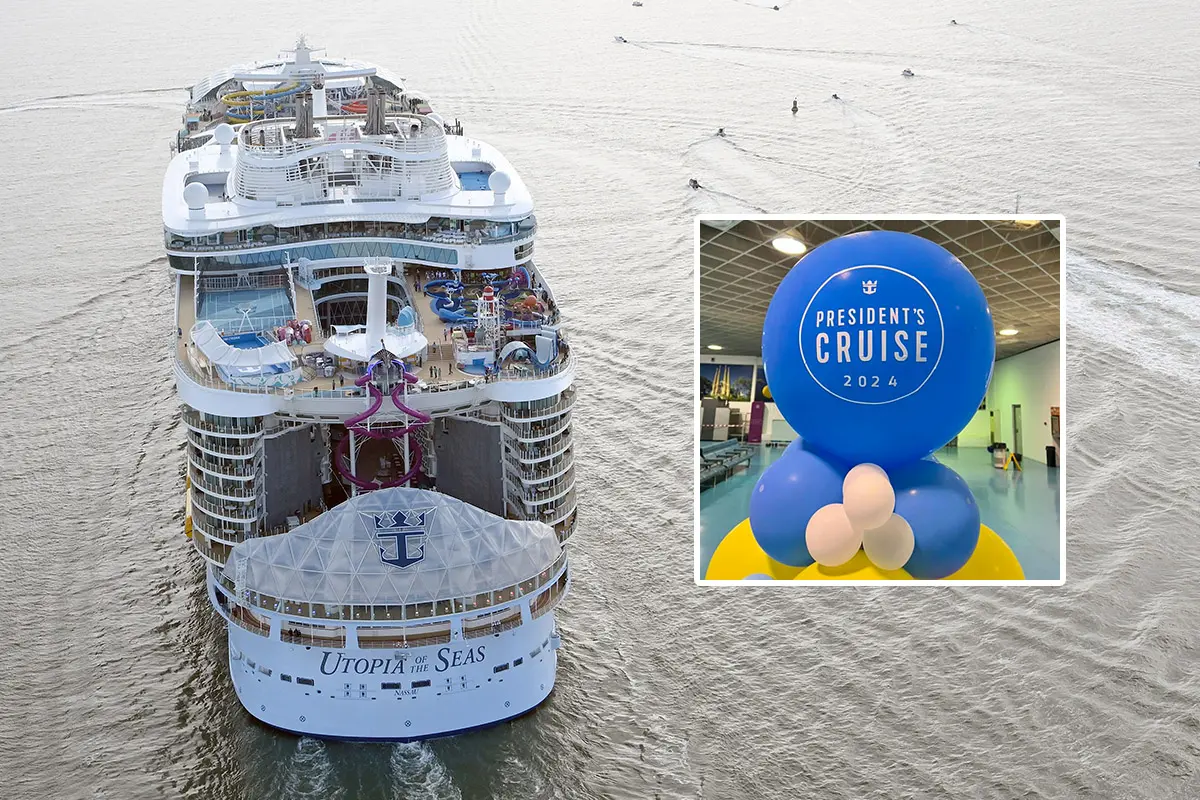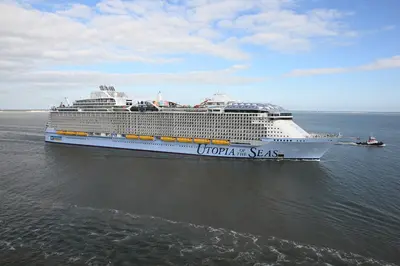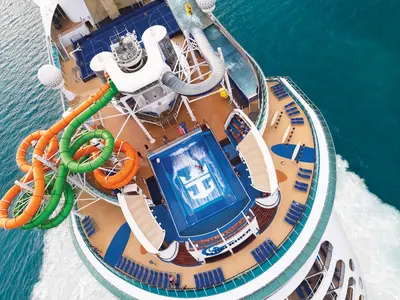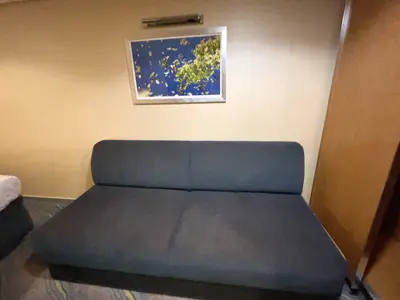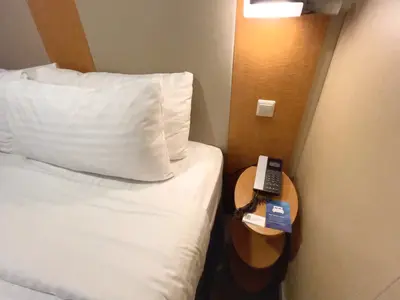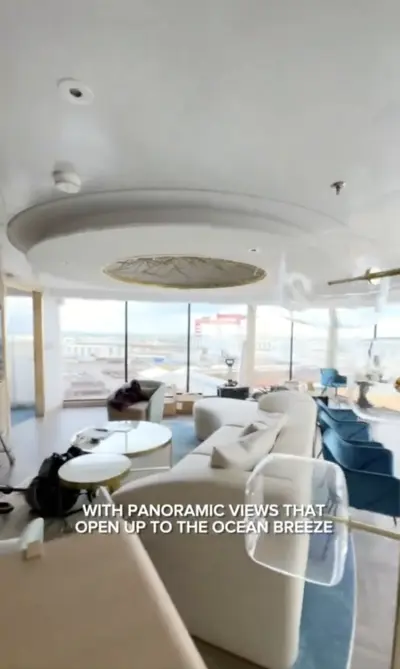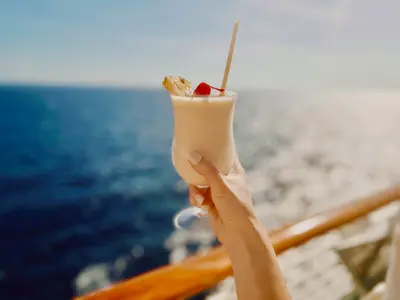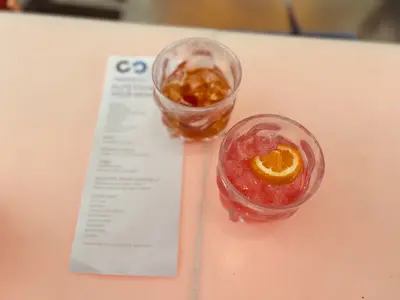Just recently, Royal Caribbean Group announced enhanced benefits for their new Loyalty Status Match program. With the updated program, guests receive more equivalent loyalty perks across the cruise line’s three bands: Royal Caribbean International, Celebrity Cruises, and SilverSea Cruises.
While all three cruise brands are owned by Royal Caribbean Group, each cruise line has its own loyalty program. With status matching, you can receive similar perks regardless of which cruise line you sail with. However, the benefits between the programs are not identical and points earned on each cruise line are separate.
As a Diamond Plus member of Royal Caribbean’s Crown and Anchor Status, I was ecstatic about this announcement. The newly announced changes would go into effect just a few days before my recent cruise on Celebrity Apex. I couldn't believe how perfect the timing was!
Following the announcement, my husband and I were excited to utilize our new Elite Plus status for the first time. Here was my experience trying out Royal Caribbean’s new Loyalty Status Match program.
With Royal Caribbean’s Crown and Anchor Society, I receive some very lucrative loyalty perks and benefits
Growing up, my family sailed religiously with Royal Caribbean, allowing me to achieve the second-highest loyalty status with the cruise line. I earned Diamond Plus status back in college and have continued utilizing the loyalty perks ever since.
The status benefits that I use most frequently include the following:
- Balcony discount
- Five free daily drinks up to $15
- Two free days of Internet
- BOGO specialty dining credit
- Diamond Lounge access
- One bag of free laundry
- One free professional photo
These loyalty perks have continued to incentivize me and my family to keep sailing with Royal Caribbean. Not to mention, my husband inherited my Diamond Plus status when we got married, allowing him to receive the same perks as I do.
The daily free drinks alone have saved us thousands of dollars over the years - it’s virtually a free drink package!
Even with these perks, my husband and I were wanting to expand our cruising horizons
Although Royal Caribbean and Celebrity Cruises are sister brands, the two cruise lines are distinct and appeal to different demographics. Celebrity Cruises is considered a premium cruise line compared to the family-friendly, more affordable Royal Caribbean brand.
For me and my husband, Celebrity Cruise’s ships and itineraries have become more appealing to us. Since we do not have kids yet, we appreciated the more upscale, adult-focused experience offered with Celebrity Cruises.
For our yearly summer vacation, we booked a 7-night Norwegian Fjord sailing from England to Norway and Belgium on Celebrity Apex. We wouldn’t have to entirely give up our loyalty perks either, which was a selling point for us!
When we booked our cruise, we originally received Elite status in the cruise line’s loyalty program, known as Captain’s Club. With the new Loyalty Status Match program, my husband and I both received a status bump from Elite to Elite Plus.
Similar to Royal Caribbean, this is the second-highest loyalty status in the Captain’s Club. Since we had already linked our loyalty numbers between Celebrity Cruises and Royal Caribbean, the status change was automatic.
I was relieved to see the new status had already updated on our reservation a few days before we flew to London for our cruise. The boarding pass and SeaPass also reflected our new Elite Plus status - elevating our pre-cruise excitement even more.
We received an overview of Elite Plus perks in our stateroom on boarding day
Upon arrival in our stateroom, we received a letter outlining our Elite Plus benefits that we would receive during our cruise. These perks were similar to our Diamond Plus benefits with benefits for internet, drinks, specialty dining, spa, coffee, and more.
We were most excited to see that Elite Plus benefits included nightly happy hour with unlimited cocktails and free specialty coffees each day! Other benefits we planned to use included the 15% discount on specialty dining, 35% discount on internet, and two free loads of laundry.
Unfortunately, the nightly happy hour with unlimited cocktails excludes embarkation day for an unknown reason. Because of this, we immediately missed having our daily drink vouchers that we receive on Royal Caribbean. Loyalty drink vouchers can be used immediately after you board your cruise, which is always the perfect start to vacation.
On the first day of our cruise, we also purchased an internet package using the Elite Plus discount. The Premium Full Package Wi-Fi included two devices for $268.40 with a 35% discount applied. The loyalty discount saved us $144.53!
I appreciated having a percentage discount with Celebrity Cruises compared to Royal Caribbean’s two free days. For longer itineraries, you can save way more with Captain’s Club compared to Royal Caribbean’s static $52 discount for internet.
One of the best perks was having complimentary specialty coffee each morning!
My husband and I both prefer starting our morning with specialty coffee, like lattes or cappuccinos, compared to standard drip coffee. Considering specialty coffee is upwards of $7 per drink, this can add up quickly on a 7-night cruise between the two of us.
Celebrity cruise ships have a lovely coffee shop called Cafe al Bacio, where you can order specialty coffees. Cafe a Bacio also serves complimentary pastries, cakes, and goodies throughout the day.
The barista confirmed on the first morning that we could have specialty coffee for free with our Elite Plus status. There were seemingly no restrictions or limits, except for alcoholic coffees.
Each morning, we would stop by Cafe al Bacio before starting our day, along with a delicious sticky bun to share. This was a perk that would require a drink voucher with Royal Caribbean, so we appreciated the indulgence each morning!
Although we missed having drink vouchers, the nightly happy hour was a great perk
Before the pandemic, Royal Caribbean provided a nightly happy hour with unlimited cocktails for those with Diamond, Diamond Plus, and Pinnacle status. After the cruise restart, Royal Caribbean changed how loyalty drinks would be served to mitigate crowding in the Diamond Lounge.
The cruise line updated this benefit to include daily drink vouchers, which could be used for almost every cocktail from any bar throughout the day. There was no longer a specific time frame when the drinks had to be used either. Most would agree this was an enhanced benefit!
On the other hand, Celebrity Cruises still only provides a nightly happy hour from 5pm to 7pm each evening for Elite, Elite Plus, and Zenith loyalty members. The perk is nearly identical to Royal Caribbean’s old system.
As such, we planned our days around this nightly happy hour, as we certainly wouldn’t miss out on our free drinks! We only had two sea days with four port stops, meaning most of our time was ashore. Luckily, most of the bars onboard Celebrity Apex participated in the happy hour around the ship.
Read more: Celebrity Cruises Drink Package Info, Tips, Pros & Cons
We were allowed to order unlimited cocktails from a limited menu, including cocktails like a Manhattan, Apple Martini, Cosmo, Screwdriver, and Sidecar. Other drinks included a selection of beer and wine. Trying the many bars around Celebrity Apex was a highlight of our time onboard!
However, we missed the flexibility of Royal Caribbean’s drink vouchers. While unlimited cocktails during happy hour is definitely a lucrative loyalty perk, I wish Celebrity Cruises would integrate this benefit from Royal Caribbean.
With the 15% specialty dining discount, we splurged on two restaurants during our cruise
One of the bigger perks that comes with Elite Plus status is a 15% discount for specialty dining cover charges. Since Celebrity Apex has some of the best specialty restaurants in the fleet, we were excited to try this benefit.
When we cruise with Royal Caribbean, my husband and I both receive the buy one, get one free specialty dining cover. This is essentially a coupon for 50% off, which we always use! Comparatively, Celebrity Cruises offers 15% off all specialty cover charges, which can be used as many times as you want.
During our cruise, we decided to try dinner at the Rooftop Garden Grill. Although it was freezing outside, the meal was fantastic! The 15% discount saved us around $16.20, with the entire meal costing $91.80.
In addition, my husband is a big fan of sushi and wanted to try Raw on 5. We decided to come here for lunch during our first sea day. My husband loved the oysters and the sushi, while my pork belly was just okay. We saved about $5.40, which isn’t anything to write home about but I will take any discount!
Overall, we typically save more on specialty dining with Royal Caribbean’s BOGO discount compared to Celebrity’s 15% discount. We only saved a little over $20 on this cruise with the discount compared to $100 on Royal Caribbean. However, we were always planning to try a few of Celebrity Apex’s specialty restaurants, so the status bump saved us money!
Although not as lucrative, my husband loved the laundry benefit!
Laundry isn’t necessarily an exciting topic - at home or on vacation. Royal Caribbean provides Diamond Plus guests with one free bag of laundry for each cruise. With this, my husband always sends his laundry to be done with our loyalty perk.
He finds the onboard laundry worthwhile when cruising so he has less to do when we get home. It’s not bad logic, and he is always grateful when we get back home and has less laundry to do than me!
So, you can imagine he was excited to see Celebrity Cruises allocated two free bags of laundry with Elite Plus. He utilized both of his free laundry coupons during our 7-night cruise. One bag of laundry on Celebrity Cruises is $50 for a bag, so this benefit was worth $100 to us!
We only used a few of the benefits, but still saved hundreds of dollars with the new status match program
Overall, we were really impressed with Royal Caribbean’s new status match program. I always appreciate being rewarded for my loyalty. Not to mention, my husband had never set foot on a Celebrity cruise ship and he still received the second highest loyalty status with the program.
We ran out of time to utilize all of the Elite Plus benefits on our cruise, such as the Captain’s Club Continental Breakfast, Wine Tasting, and Private Departure Lounge.
However, we were thrilled to save as much money as we did on our Celebrity Apex cruise. I am already looking to plan future Celebrity cruises to continue taking advantage of these loyalty benefits.
